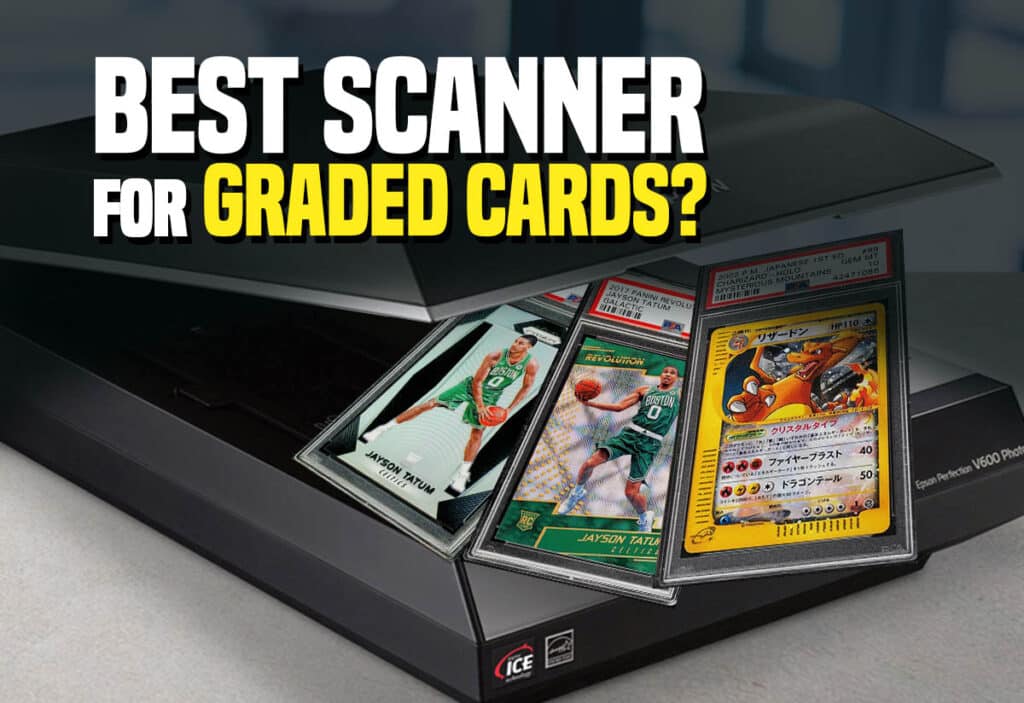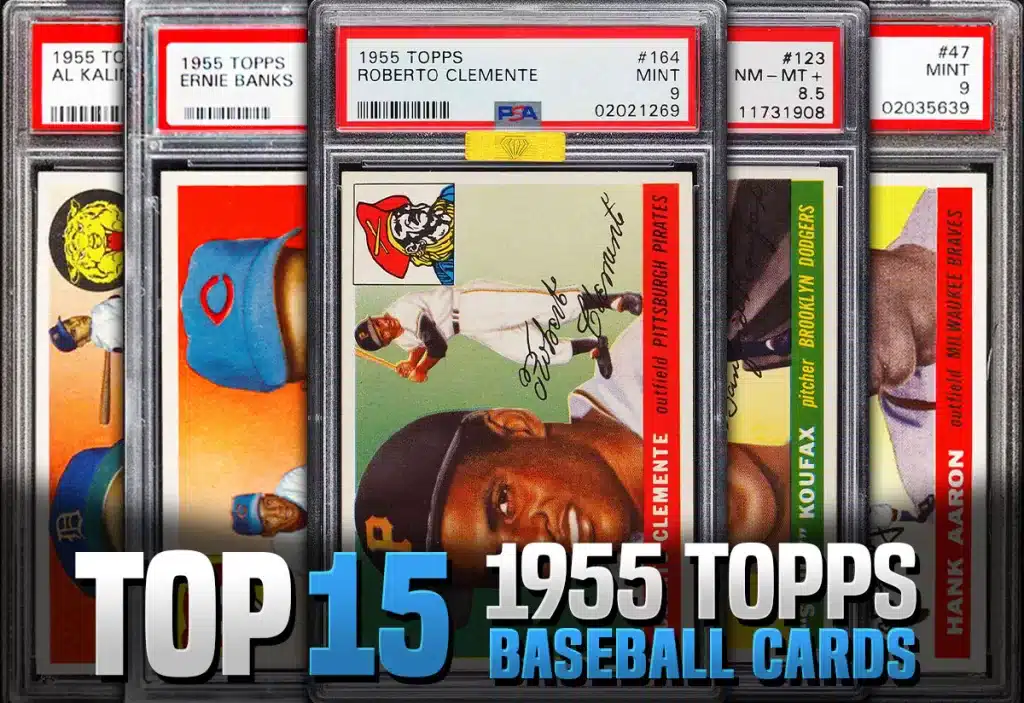Trimming Sports Cards
Trimming sports cards is a deceptive practice that can significantly inflate the perceived value of a card. As a collector or investor, it’s crucial to identify such alterations to avoid potential losses. Here’s a comprehensive guide on how to detect trimmed cards:
Understanding Trimming vs. Miscut Cards:
Firstly, distinguish between a trimmed card and a miscut card. Miscut cards are manufacturing errors with uneven or misplaced borders. In contrast, a trimmed card is intentionally altered post-manufacturing to improve its appearance, typically by cutting the borders to enhance sharpness and centering.
Examine Under a Loupe:
- Use a loupe (a small magnifying device) to inspect the edges of the card. Original cards usually have small fibers sticking out from the edges, while trimmed cards have unnaturally smooth and sharp edges. A quality triplet lens loupe (10x magnification) is recommended for accurate inspection, as it corrects color and image distortion.
The ‘Eye Test’:
- Sometimes, a trimmed card is evident just by looking at it. Anomalies like jagged borders, overly sharp corners, or uneven border sizes can be telltale signs of trimming. Familiarity with the specific card set can enhance your ability to spot these discrepancies.
- For instance, the 1952 Topps Willie Mays shown below has edges that are obviously curvy on the left and right side. This is due to the knife moving when being pulled down the straight edge. Or the collector may have just free-handed the cut.
- You can also see how the card does not fit snug in the SGC case. If there is ample amount of room in the case then the card has been trimmed. SGC custom makes the cases to fit the dimensions of the cards.
➡️ Top 20 Willie Mays Baseball Cards

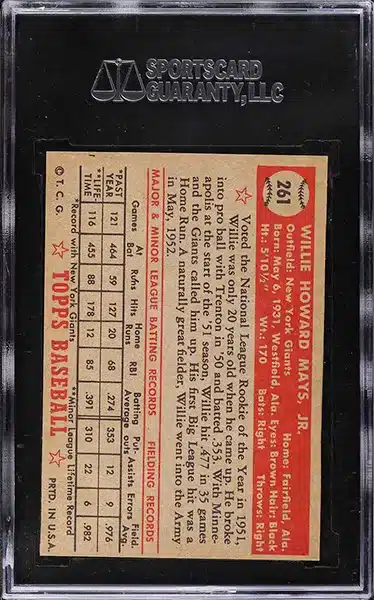
Card Measurement:
- Measure the card to see if it aligns with the typical dimensions for cards from its set. However, be aware that some vintage cards, like the T206 series, naturally vary in size due to historical printing inconsistencies. While measuring can be a starting point, it’s not always conclusive.
Using a Blacklight:
- A blacklight can reveal alterations not immediately visible. It can show if a card has been recolored or had substances added to its surface. Altered areas often luminesce under UV light.
Rubbing Your Finger Along the Edge:
- a simple yet effective way to detect trimmed cards is through tactile inspection. By running your finger gently along the edges of the card, you can feel for any irregularities or unevenness. Factory-cut edges are typically smooth and consistent, while trimmed edges may feel wavy or uneven. This method, which relies on touch, can be a quick and tool-free way to spot alterations.
- Take the 1952 Topps Mickey Mantle example below. The top, bottom and left sides are not trimmed, however, the right side is. If you ran your finger along that side you would feel a noticeable difference from the left side. This is a bit of an extreme example but it paints a clear picture on how this method is used.
➡️ Top 20 Mickey Mantle Baseball Cards
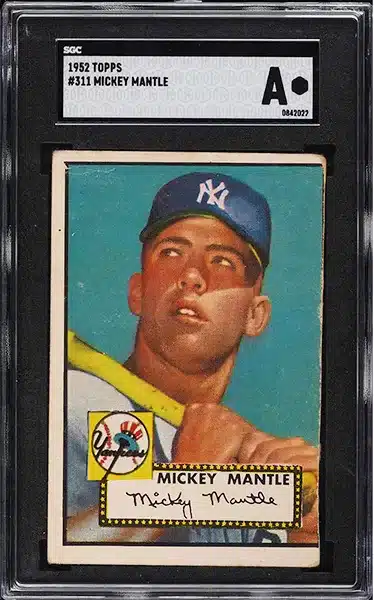
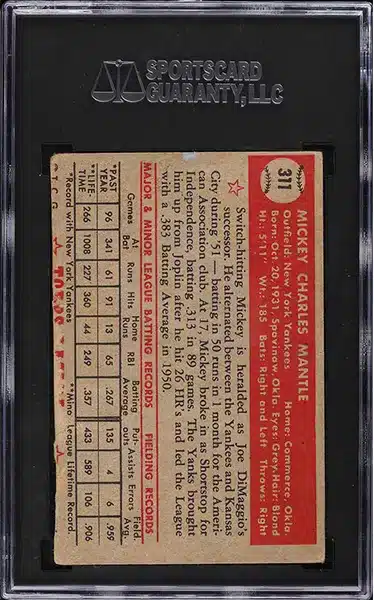
Look for Signs of Beveling:
- Beveling involves trimming the card’s edge at an angle, often to remove chipping or surface damage. This form of trimming changes the natural aging appearance of the edge, making it look fresher than the rest of the card.
Check for Inconsistencies in Texture and Color:
- The texture of the card’s edge can indicate trimming. Factory-cut edges have a specific feel, different from those cut by razors or paper cutters. Additionally, observe the color of the edges; freshly cut edges may appear whiter and lack the aged color of the rest of the card.
Assessment by Grading Companies:
- Be aware that while grading companies like PSA won’t provide a numerical grade to a trimmed card, they might label it as ‘Authentic’ or ‘Authentic Altered’. This grading indicates that the card is genuine but has been altered, possibly including trimming. Card Grading: The Ultimate guide to BGS, PSA, SGC & CSG.
- The 1952 Mickey Mantle card shown below, despite its worn and altered condition, was authenticated by Beckett and secured in an ‘Authentic Altered’ case. Although the card’s appearance might be far from pristine, it retains significant collectible value and historical importance.
- For cards of such caliber, even if they are trimmed, it’s advisable to seek authentication from a reputable third-party grading company. The value of such iconic cards remains high, underscoring their enduring appeal to collectors, regardless of condition.
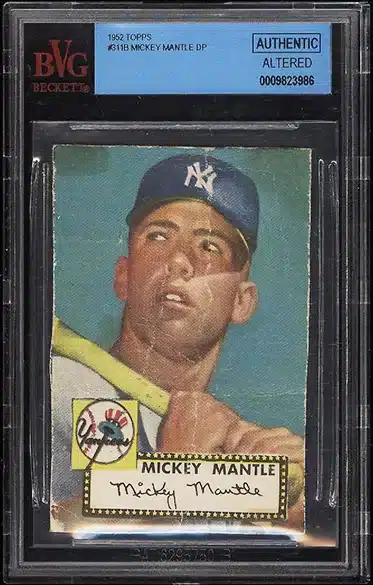

Final Thoughts
In conclusion, detecting a trimmed card requires a combination of visual inspection, measurement, and the use of tools like a loupe and blacklight. Familiarity with the particular card set and understanding the natural aging and manufacturing characteristics of cards are also crucial in making an accurate assessment.
When investing in baseball cards, always approach high-value card purchases with caution and consider consulting experts or using professional grading services for verification.
From a young age, Matt dove deep into sports card valuation, turning to esteemed price guides like Beckett and Tuff Stuff. Eventually he extended to Pokémon, Magic: The Gathering, and Yu-Gi-Oh!. With a vision to sustain and nurture the hobby he loved, Matt established the ‘Graded Card Investor’ YouTube channel and website. He aims to foster a healthy community and offer invaluable insights to those entering the world of sports cards and TCGs. His depth of understanding, from the card market’s 2020 pinnacle to its 1990s valleys, is consistently fortified by meticulous research.

